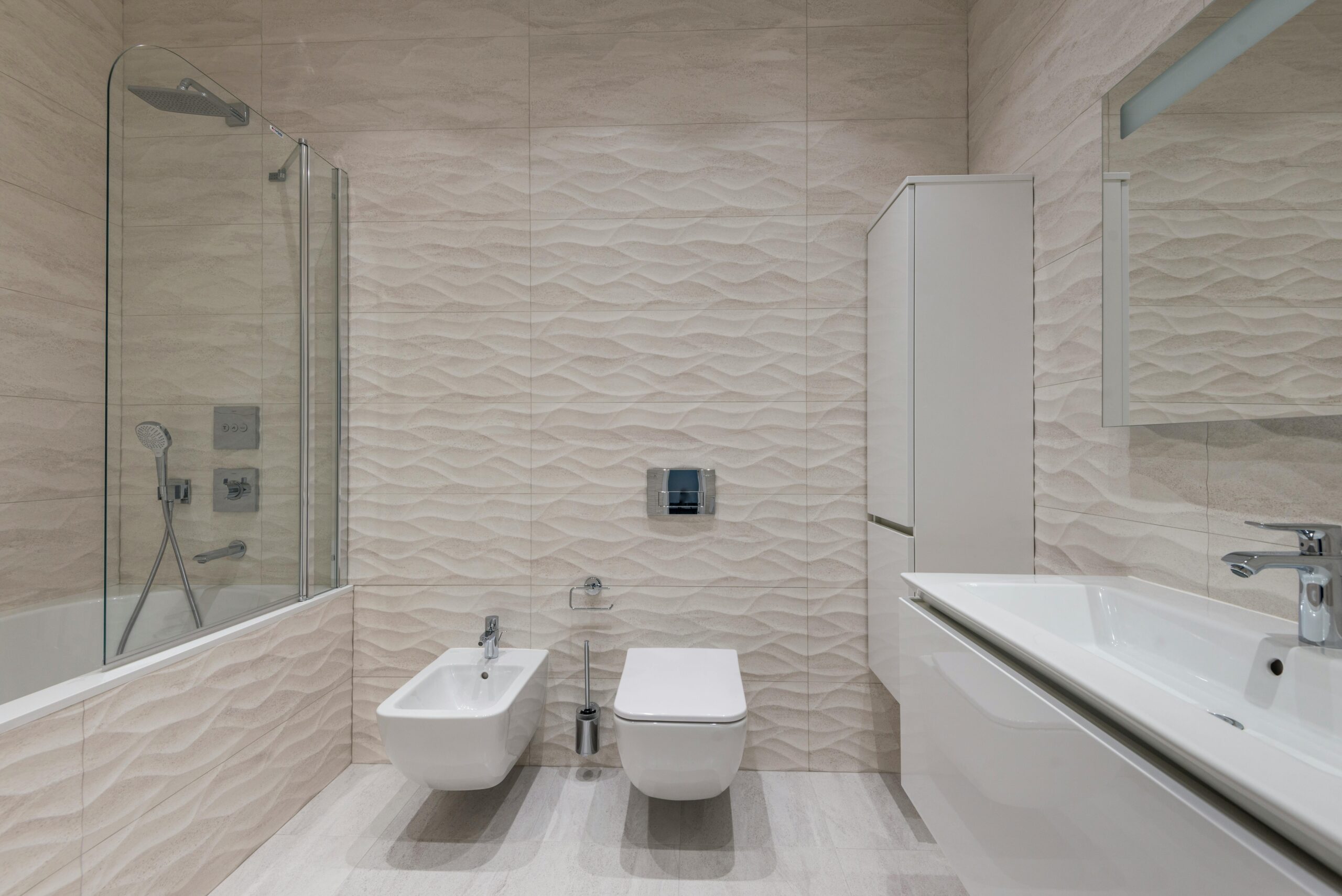Ceramic tiles have long been a popular choice for both residential and commercial spaces due to their durability, easy maintenance, and aesthetic appeal. Whether you’re renovating your bathroom, kitchen, or any other part of your house, choosing the right ceramic tiles is essential. The right tiles can transform a space, making it more functional and visually appealing. In this guide, we’ll cover how to select the ideal ceramic tiles for different applications, from floor tiles to bathroom wall tiles, along with tips on understanding tiles price and where to find the best tiles shops.
1. Understanding Different Types of Ceramic Tiles
When it comes to ceramic tiles, there are different types to consider based on your needs:
- Floor Tiles: Specifically designed to withstand high foot traffic and resist wear and tear.
- Wall Tiles: Typically lighter and thinner than floor tiles and are not intended for heavy-duty usage.
- Bathroom Tiles: Bathroom wall tiles and bathroom floor tiles are usually moisture-resistant and can add style to an otherwise utilitarian space.
- Vanity Tiles: These tiles are used to highlight vanity areas, adding a touch of luxury and elegance.
Each type serves a unique purpose, so understanding the distinctions is crucial to making the right choice for your project.
2. Determining Your Aesthetic Vision with Ceramic Tiles
Your choice of ceramic tiles should complement the overall design of your home. Whether your preference leans toward modern, classic, rustic, or minimalist styles, you can find ceramic tiles in various designs, colors, and finishes that suit your taste.
a. Choosing the Right Tiles Design
One of the best aspects of ceramic tiles is the diversity in tiles design. For a contemporary look, you might want to consider tiles with bold geometric patterns or monochromatic designs. On the other hand, traditional tiles with intricate patterns can add warmth and character to a space.
b. Color and Finish
Color and finish are other key aspects of tile design. Light colors can make a room feel larger and brighter, making them ideal for smaller bathrooms or compact spaces. Darker colors, such as navy or charcoal, can create a cozy, intimate environment. Matte-finished tiles provide a soft, understated look, while glossy tiles can reflect light and make a room feel more spacious.
3. Choosing Ceramic Tiles Based on Space
When selecting tiles for different parts of your house, it’s essential to consider factors like slip resistance, water resistance, and ease of maintenance.
a. Floor Tiles
Floor tiles need to be sturdy, durable, and easy to maintain, especially in high-traffic areas like kitchens and hallways. Look for ceramic floor tiles that are rated for durability and are slip-resistant, especially if you’re installing them in areas prone to water spills. Neutral colors are often a popular choice for floor tiles as they provide a versatile base for various decor styles.
b. Bathroom Floor Tiles and Bathroom Wall Tiles
When it comes to bathroom tiles, both floor and wall options must be water-resistant. For bathroom floor tiles, opt for slip-resistant surfaces to ensure safety. On the other hand, bathroom wall tiles can be more decorative and feature unique textures and finishes to add visual interest to your space.
For an added touch of elegance, consider vanity tiles. These tiles can highlight specific areas, adding a focal point to your bathroom and drawing attention to your vanity.
4. Budgeting for Ceramic Tiles: Tiles Price
One of the main factors influencing your choice of tiles is tiles price. The price of ceramic tiles can vary based on the quality, brand, and design. While high-end designer tiles can elevate your space, you don’t necessarily need to break the bank to achieve a stylish look.
- Basic Ceramic Tiles: These are usually the most affordable option, with a wide range of colors and finishes.
- Mid-range Tiles: These tiles often feature unique patterns or textures and are made from high-quality materials.
- High-end Ceramic Tiles: Premium tiles tend to be more durable and resistant to wear, often coming with intricate designs that make them a feature in themselves.
When choosing tiles based on price, it’s crucial to consider the durability and maintenance of the tiles, as high-quality tiles may save you money in the long run due to their extended lifespan.
5. Checking for Quality and Durability
Ceramic tiles vary in quality, and checking for durability is essential, particularly for high-traffic areas. Here are some quality indicators to keep in mind:
- PEI Rating: This rating measures the tile’s resistance to abrasion. For instance, tiles with a PEI rating of 3 or higher are generally suitable for residential floor applications.
- Water Absorption Rate: The water absorption rate is a crucial factor, especially for bathroom tiles and kitchen areas. Tiles with a lower absorption rate are more suitable for humid or wet environments.
- Scratch Resistance: Check the Mohs hardness rating of the tile to understand its scratch resistance. Higher-rated tiles are more resistant to scratches and wear.
Choosing high-quality ceramic tiles can ensure longevity, reducing the need for frequent replacements and repairs.
6. Exploring Tiles Shops and Brands
When it comes to purchasing ceramic tiles, it’s essential to visit reputable tiles shops. Visiting a physical store allows you to see and feel the tiles, making it easier to visualize how they would look in your home. However, online tile stores have become increasingly popular, offering a wider selection and often providing samples for customers.
When visiting tile shops or exploring brands online, inquire about return policies, warranties, and any available customization options. Some brands even offer unique collections that might better fit your aesthetic goals.
7. Installation and Maintenance
Once you’ve selected the perfect ceramic tiles for your home, proper installation and maintenance are key to maximizing their lifespan.
a. Professional Installation
Hiring a professional tiler is often worth the investment, as they can ensure that your tiles are installed correctly and last for years. Proper tile spacing, grouting, and sealing can prevent issues like cracks and water damage down the line.
b. Maintaining Your Ceramic Tiles
Ceramic tiles are generally low-maintenance, but they still require regular cleaning to keep them looking fresh. Here are some quick tips for maintaining your tiles:
- Regular Cleaning: Sweep or vacuum your tiles regularly to remove dirt and prevent scratches.
- Mop with Mild Cleaner: Use a mild detergent mixed with water to mop your floor tiles. Avoid harsh chemicals that may damage the finish.
- Grout Care: Clean grout lines with a soft brush and gentle cleaner to prevent discoloration.
With the right maintenance routine, ceramic tiles can retain their beauty and functionality for years.
8. Trends in Ceramic Tiles for 2024
Ceramic tiles continue to evolve with trends, and staying updated can help you make a choice that feels fresh and contemporary.
- Large Format Tiles: Large tiles create a seamless, expansive look, especially for house tiles in living rooms and open areas.
- Textured Finishes: Tiles with textured finishes are gaining popularity, as they add dimension and interest to a space.
- Earthy Tones and Natural Patterns: Neutral tones inspired by nature are a big trend, with tiles that mimic stone, wood, and other organic textures.
- Mixed Materials: Some of the latest designs mix ceramic with materials like glass or metallic accents, adding a unique touch to bathroom wall tiles and vanity areas.
9. Popular Areas for Installing Ceramic Tiles in Your House
Ceramic tiles can be used in virtually every part of your house. Here are some popular areas where ceramic tiles are commonly installed:
- Entryway: Create a stunning first impression with durable and stylish floor tiles in your entryway.
- Living Room: Use large ceramic tiles to make your living room look spacious and modern.
- Kitchen: Kitchen floor tiles should be slip-resistant and easy to clean. Ceramic tiles in lighter shades can make your kitchen feel more open and airy.
- Bathroom: Choose slip-resistant bathroom floor tiles and decorative bathroom wall tiles to create a cohesive and functional look.
- Patio: Outdoor ceramic tiles should be durable and resistant to weather elements.
10. Customizing Ceramic Tiles for Unique Designs
Some homeowners are opting for customized ceramic tiles to add a unique, personal touch to their spaces. Custom tiles can be used to create specific patterns, showcase artwork, or add textural elements to a room. This is especially popular for vanity tiles or bathroom wall tiles, where intricate patterns can create a striking focal point.
Final Thoughts
Choosing the perfect ceramic tiles involves a balance between style, durability, and budget. By considering factors like space, design, quality, and installation, you can find tiles that not only enhance the aesthetic appeal of your home but also stand the test of time. Visiting reputable tiles shops and researching trends can help you make a more informed choice. From bathroom tiles to floor tiles, ceramic tiles offer versatile options that can transform your house into a stylish and functional space. Whether you’re aiming for modern elegance or rustic charm, the right ceramic tiles can be the foundation of your dream design.

